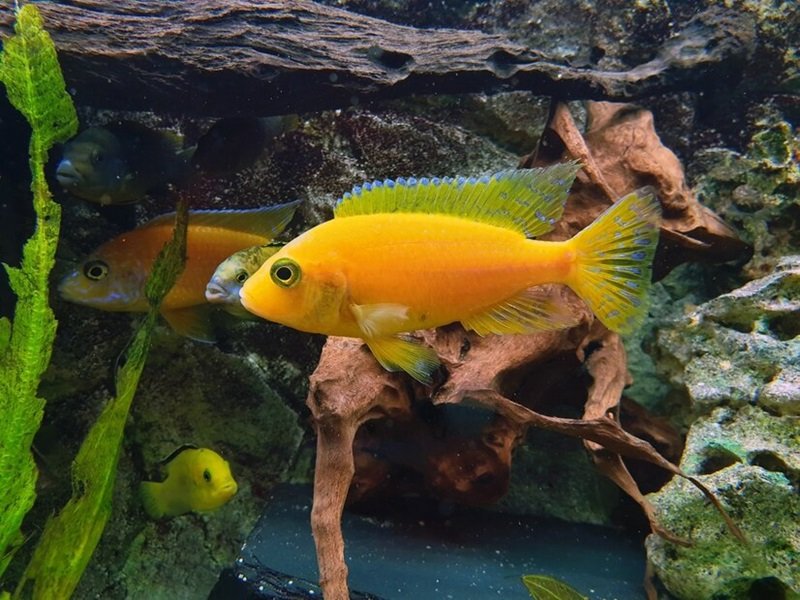Butterfly parks are magical spaces where visitors can observe the delicate beauty and fascinating behaviors of butterflies in settings designed to mimic their natural habitats. One of the most critical elements in the design and conservation of these parks is the use of native plants. Native plants play a crucial role in creating suitable environments for butterflies, ensuring their survival and enhancing the ecological balance of the park. In Maharashtra, parks like Kesari Bird Park exemplify how incorporating native flora contributes to the success of butterfly conservation efforts and establishes some of the best tourist places in Maharashtra.
Why Native Plants Matter in Butterfly Parks
- Essential Food Sources
- Nectar Plants: Butterflies rely on nectar from flowers for their energy. Native flowering plants are the primary sources of nectar for local butterfly species. By planting native nectar plants, butterfly parks can provide a reliable and abundant food source, ensuring the health and longevity of butterfly populations.
- Host Plants: Female butterflies lay their eggs on specific plants known as host plants, which provide food for the caterpillars. Native host plants are crucial for the life cycle of butterflies, as they offer the necessary conditions for larvae to develop and thrive.
- Supporting Local Ecosystems
- Biodiversity: Native plants support a diverse array of wildlife, including pollinators, birds, and other beneficial insects. By incorporating these plants into butterfly park design, parks can foster a more robust and balanced ecosystem.
- Soil Health: Native plants are adapted to local soil conditions, which helps in maintaining soil health and preventing erosion. This, in turn, creates a more stable environment for butterflies and other wildlife.
- Enhanced Conservation Efforts
- Habitat Restoration: Many butterfly species are threatened by habitat loss. By using native plants, butterfly parks can contribute to habitat restoration and conservation efforts, providing crucial refuges for endangered species.
- Climate Adaptation: Native plants are better adapted to local climate conditions, making them more resilient to environmental changes. This adaptability helps kesari butterfly park remain stable and supportive environments for butterflies throughout varying weather conditions.
Designing Butterfly Parks with Native Plants
- Selecting Native Flora
- Research Local Species: Identify native plants that are known to attract butterflies and provide essential resources. Consult local horticulturists and conservationists to ensure the selection of appropriate species.
- Designing Plant Beds: Create plant beds with a mix of nectar and host plants to cater to various butterfly species. Arrange plants to create natural-looking habitats and provide shelter and food sources.
- Creating Naturalistic Environments
- Habitat Features: Incorporate additional habitat features such as water sources, shelters, and perching areas. These elements enhance the attractiveness of the kesari butterfly park to butterflies and other wildlife.
- Seasonal Planting: Plan for seasonal variations by including plants that bloom at different times of the year. This ensures a continuous supply of nectar and supports butterflies throughout their active seasons.
- Monitoring and Maintenance
- Regular Monitoring: Keep track of plant health and butterfly activity to ensure that the park remains a suitable environment for its inhabitants. Address any issues related to plant diseases or pests promptly.
- Community Involvement: Engage the local community in conservation efforts by organizing volunteer programs for planting and maintenance. This fosters a sense of stewardship and supports the park’s long-term sustainability.
Conclusion
The use of native plants in butterfly park design is essential for creating thriving habitats that support butterfly populations and contribute to broader conservation efforts. Parks like Kesari Bird Park in Maharashtra showcase the benefits of incorporating native flora, enhancing their role as premier tourist destinations while supporting vital ecological processes. By prioritizing native plants, butterfly parks can ensure the health and sustainability of butterfly populations, providing enriching experiences for visitors and contributing to local biodiversity conservation.
FAQs
How do native plants benefit butterflies specifically?
Native plants benefit butterflies by supplying the nectar that adults need for energy and the specific host plants where females lay their eggs. These host plants provide food for caterpillars, which is essential for their growth and development. By supporting these needs, native plants help maintain healthy butterfly populations.
What types of native plants should be used in butterfly parks?
Butterfly parks should include a mix of nectar plants and host plants native to the region. Nectar plants might include species such as milkweed, coneflowers, and butterfly bush, while host plants could be those that caterpillars feed on, such as parsley for swallowtails or nettles for tortoiseshell butterflies. The specific plants will depend on the local butterfly species and climate.
How do native plants contribute to the overall ecosystem of a butterfly park?
Native plants enhance the overall ecosystem by supporting a diverse range of wildlife, including other pollinators, birds, and beneficial insects. They help maintain soil health, reduce erosion, and improve water retention. This creates a balanced and resilient environment that supports not just butterflies, but a variety of other species as well.




